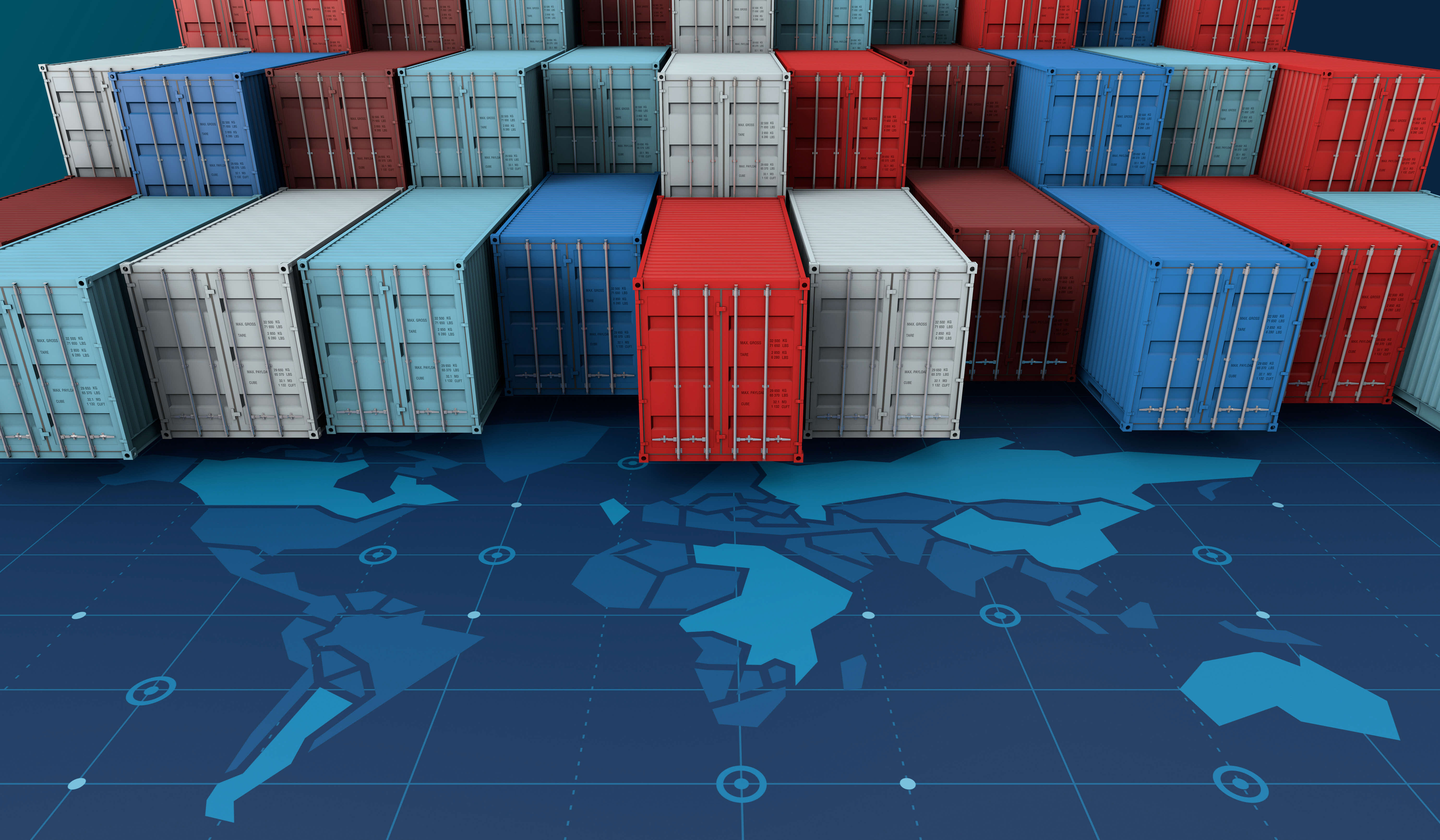Adoption of digital payment systems is crucial for maritime industry competitiveness
Maritime industry players need to accelerate the adoption of digitalisation to stay competitive and course-correct in response to global events.

Unforeseen events such as the recent Suez Canal blockage and the pandemic have illuminated the vulnerability of supply chains—of which the maritime industry is a vital link. In this latest Business Insights article, we summarise the importance of digitalisation for the maritime industry, shared during the webinar organised this year by DBS, MPA and IMDA. Speakers of the webinar include DBS’s Max Lim, Managing Director, Group Head of Shipping, Aviation, Logistics and Transportation and Parvi Gangal, Digital Client Engagement and Solution team lead along with Maritime and Port Authority of Singapore’s (MPA) Ng Yi Han, Director, Innovation, Technology and Talent Development, and Sebastian Gana Selban, Executive Manager from IMDA’s E-invoice Project Office.
The COVID-19 pandemic has led to unprecedented changes within the maritime industry. This was most evident in the container shipping sector, which faced a host of significant disruptions from port congestions to container shortages coupled with capacity management, which resulted in elevated freight rates. While some of these logistical challenges resulted from the pandemic, they were further accentuated by existing inefficiencies within the broader transportation ecosystem, e.g., fragmented supply chains and paper-based documentation and business processes.
It is thus imperative for the shipping industry to advance towards digital technology adoption and innovation to improve coordination and increase efficiency.
The case for digitalisation
According to MPA’s Ng Yi Han, “We envision a fully digital maritime value chain. End-to-end communications will be streamlined, as data and information are shared and standardised through open, interoperable, trusted and secure platforms.”
According to the Digital Acceleration Index study commissioned by IMDA1, going digital pays off.
- Increased productivity and employee performance reduces costs and drives and enhances earnings.
- Deeper focus on innovation helps to create new products, services and experiences, generating new revenue streams.
- Higher customer satisfaction and loyalty as you can respond to your customers faster.
Let's examine what the digitalisation of the industry includes in terms of payment processes and the resultant benefits.
- Re-engineering payment processes leads to cost and time efficiencies
Digital transformation is not just about using the latest technology. The goal is to rethink existing processes in a new, customer-led way, saving time and money for the sector. Explains Sebastian Gana Selban from IMDA, “Unlike manual invoicing which can be time-consuming and error prone, InvoiceNow allows any business to send an invoice directly from their accounting system to the partner’s accounting system efficiently.”
Sebastian refers to an IMDA commissioned study that revealed that the cost to process an invoice manually is about $8 an invoice. When there are errors in the invoice, the cost to rectify these errors in the invoice is approximately $72—nine times the original amount.
Asserts Max in the webinar: “Digitalisation in financial payments can bring about many benefits amongst which are safety, process efficiency and cost effectiveness.”
Take the example of APIs (application programming interface). Using APIs, vendors can store and update customers’ details with ease instead of asking customers for information they then validate. This approach is an example of being truly digital.
Enabling convenient and accessible customer-focused payment systems for the maritime industry will strengthen the entire sector and those interacting with it.
- Easily traceable and secure payment
With digital maritime payments, both the payer and the payee have access to the underlying transaction details to validate whether a transaction has occurred. Because of strict government regulations around the processing of e-payments, the service is relatively secure. As part of the Smart Nation agenda, Singapore has a target of being cheque-free by 2025. Digital payments also add an extra layer of safety whereby we can decrease COVID-transmission risk by reducing the usage of cash.
According to MPA’s Ng Yi Han: “Less than 5% of companies today are still paying MPA via cheques. We understand that there are many more maritime companies transacting with one another via cheques, and we think there is a potential risk of cheques being lost in transition."
- Digital payments open the door to the use of advanced technologies
There is now more than enough evidence of clear use cases that have used emerging and commercially viable technologies such as the Internet of Things (IoT) and advanced analytics. Using advanced analytics will enable maritime companies to improve cargo visibility throughout the voyage via track and trace, optimise bunker procurement and consumption of compliant fuels, and calibrate fleet deployment, ultimately reducing costs and improving emissions monitoring.
One such forward-looking player is BMT, a marine and shipping consulting giant headquartered in the UK. The firm aims to attract quality operators and new venture opportunities in Asia using its new marine geospatial digital data fusion technology.2
Another example is Hiin Holdings, a Singapore-based logistics and maritime company. In 2017, the company decided to go digital with its payment methods. It adopted a DBS-enabled Internet banking platform that allowed the company’s authorised Treasury Managers to approve transactions, pay vendors and access real-time account information on the go.
Explains C.L Lim, CEO, Hiin Holdings, “A reduction in error rate was the other improvement I noticed. In the past, information would have to be manually extracted from our records before we can issue purchase orders, provide payment instructions and raise cheques. By switching over to digital payments, the error rate has fallen from 12 per cent to an average of about 2.8 per cent per year — meaning less reworks for our team, improved accuracy and better productivity all around.”3
- Digital automation saves time, cost and effort
Paper or physical invoices are common pain points for maritime sector businesses, resulting in manual tracking and easily lost or overlooked physical invoices at virtually every stage of the process.
Even if e-invoices are issued, unless an automated digital process has been set up, needless time and effort are being expended.
Digitalisation enables maritime players to handle all trade-related paperwork within encrypted platforms. DBS’s Parvi Gangal elaborates: “Imagine if there was seamless connectivity between your ERP software and banking platform and that payment files are seamlessly moved from one to the other. And for reconciliation, the status updates are seamlessly transferred from the banking platform into your ERP such that there is no manual intervention required.”
The benefits of adopting digital methods of financial payment include streamlined processes, reduced cost, and greener operations by reducing paper invoices.
- Global competitiveness
A significant advantage of a digitalised maritime industry is that it helps strengthen its competitive edge in the global landscape. When transactions and interactions with an international maritime centre like Singapore is seamless, efficient, easy and secure, industry players will likely be more inclined to base their businesses here. This, in turn, will have a positive flow-on effect on the national economy.
IMDA’s nationwide E-Invoicing initiative helps ensure that Singaporean maritime businesses are at the forefront of digital payment adoption. Singapore must accelerate maritime digitalisation with other maritime centres worldwide and in the region, embarking on digital journeys and with more modern, higher-tech ships replacing ageing fleets.
According to Max Lim from DBS, “We would like to play a constructive role in contributing more towards the digitalisation of financial services and transactions within the maritime industry in Singapore. With this objective in mind, DBS had entered into an MOU with MPA in September 2020 to collaborate on this endeavour.” This will enable Singapore to maintain its standing as an international maritime centre that is well-positioned to serve the needs of global trade.
A digital payments ecosystem will co-create and implement innovative solutions to unlock efficiencies and enhance the maritime sector’s resilience.
References
1https://www.sgpc.gov.sg/media_releases/mpa/press_release/P-20200619-1
2https://www.maritime-executive.com/features/bmt-s-marine-survey-and-consulting-services-poised-for-further-growth
3https://www.mpa.gov.sg/web/wcm/connect/www/0d96ce09-284c-4a9c-85b5-fa75df291dd0/Maritime+Frontier+-+Issue03+JUN2021.pdf?MOD=AJPERES&id=1622449561453


